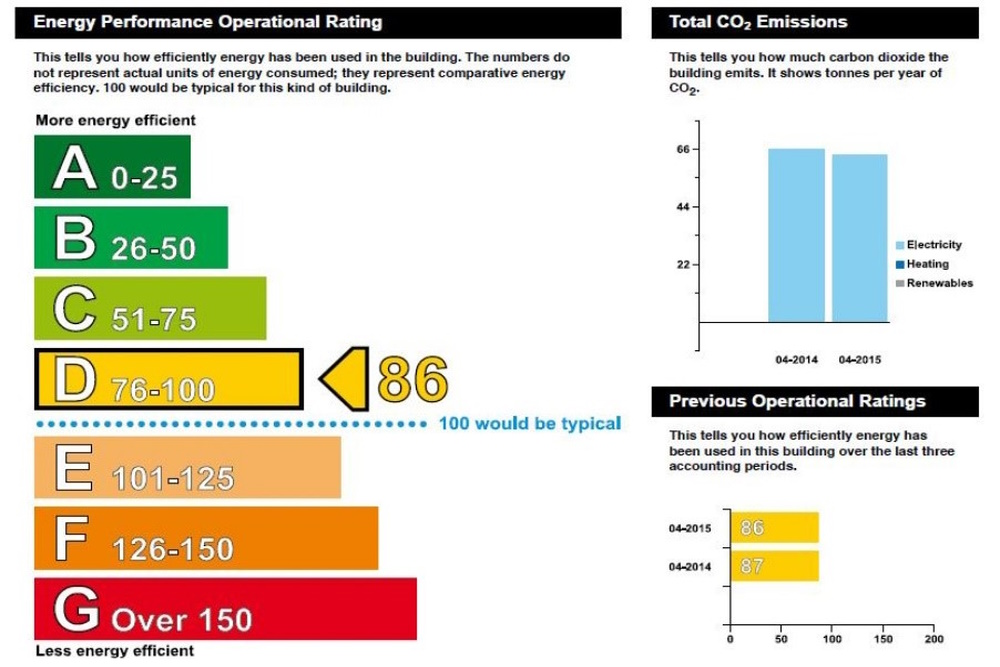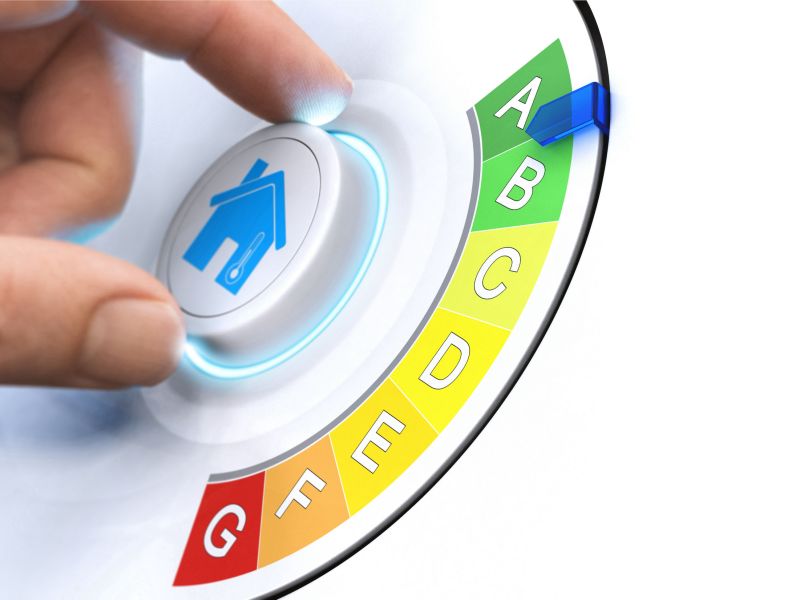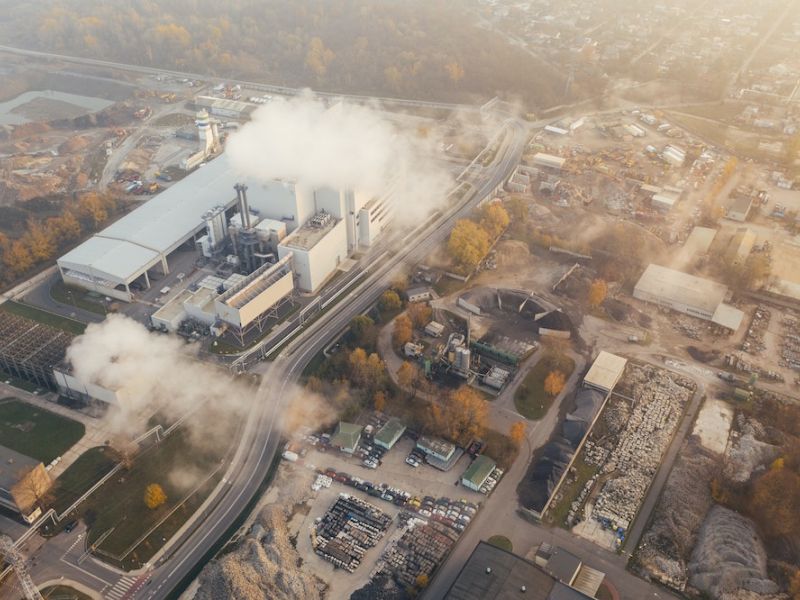
Display Energy Certificates – Everything you need to know
When it comes to measuring energy usage in buildings, Display Energy Certificates (DECs) are a must. DEC certificates demonstrate the energy efficiency of a building and can help identify areas for improvement. We will explore what Display Energy Certificates are, how they work, and why they are important for building owners and managers. Whether you’re a property owner or simply interested in improving energy efficiency, this post will provide you with everything you need to know about Display Energy Certificates.
What is a Display Energy Certificate?
A Display Energy Certificate (DEC) reveals the energy usage of a building occupied by public authorities or institutions and measures their overall energy consumption and efficiency. The certificates resemble energy labels used on vehicles and household appliances. The energy rating measurement uses the same A-G efficiency scale, with A being the most efficient and G being the least.
Why do I need a Display Energy Certificate?
In July 2015 it became mandatory for public buildings in the UK with a floor area over 250m² to display a DEC. They were initially implemented to improve energy performance in commercial buildings across the UK. They remain one of the simplest methods for determining the energy efficiency of public sector buildings. This piece of legislation is enforced by Trading Standards Officers.
Will I receive anything else with a Display Energy Certificate?
A DEC is also combined with an Advisory Report that includes useful information to improve the energy performance of the building. They are produced by a low carbon energy assessor who will also be able to consultant you on net zero strategies.
How often do I need to renew a Display Energy Certificate?
The length of time that a DEC is valid depends on the building floor area:
- 1 year if the building floor area is over 1000m²
- 10 years if the building’s area falls between 250m² and 1000m²
The advisory report is valid for 7 years when over 1000m² and 10 years when it’s between 250m² -1000m²
These time frames are deemed sufficient for the occupier of the building to act on recommendations within the advisory report.
If a public authority has multiple buildings per site, the site’s first year of DEC requirements may be carried out via a site-based approach. Therefore, only one DEC will be necessary as a comprehensive measurement of total energy consumption across buildings. Public bodies that may take advantage of this approach are NHS Trusts, universities, and schools.
How do you obtain a Display Energy Certificate?
1) Metering Readings
The first step needed is to understand the energy consumption of the building. This begins with meter readings for all fuels used over the course of the year. A few of these include:
- Gas
- Oil
- Solid fuels
- District heating and cooling
- Grid electricity and electricity generated on-site or obtained by private distribution systems from other sites.
You can get this information from:
- On-site energy meters
- The building landlord or representative
- The utility supplier
- The district heating/cooling provider
2) Accredited Energy Assessor
The next step is having an accredited low carbon Energy Assessor produce the DEC and Advisory Report by:
- Reviewing all energy consumption data in accordance with the government-approved method
- Making any necessary adjustments made for occupancy, special energy uses, weather, and climate
- Providing a measurement of CO2 emissions per square meter for the total useful floor area and building type
- Understanding the methods used to heat and cool the building as well as heating and cooling water
- Documenting what insulation materials to retain heat are in use
- Identifying the type of lighting in the building
- Assessing if there is any on-site energy generation (secondary heat sources using renewables or carbon neutral methods, etc.)
3) National Register
Finally, once the above information has been collected and reported the DEC and Advisory report can be produced. Then the DEC must be submitted to the national register with a unique certificate reference number.
All energy assessors must act independently and in a non-biased manner. They will make recommendations from a walk-through survey, or from a desk-based survey using previously-collected data about the building.
What does a DEC look like and display?
A DEC is typically A3 in size and similar to the picture above. The most prominent piece of information is the operational rating which is measured on an A to G scale, with ‘A’ being the most efficient. The above example has a D rating and a score of 86. The DEC will also show the typical score for that building type which is 100 in this example.
The DEC will display previous ratings as well as the CO2 Emissions in tonnes per year.
Where should I display my DEC?
When a DEC is obtained, it should be clearly displayed at all times in a prominent and highly visible place within the building.
What is the penalty for not having a DEC?
A £500 penalty can be issued for organisations that requires a DEC and don’t comply, as well as organisations that have a DEC but haven’t displayed their certification in a clearly visible place.
Furthermore, an additional penalty fee of £1,000 may be charged for failing to have a valid advisory report.
The Trading Standards may act based on public complaints, or conduct random investigations. If they believe that an occupier is affected by the regulations, they can request that they produce the relevant documents within seven days of the request.
What happens if a building’s rating hasn’t changed in a year?
When your DEC expires and an assessor produces another DEC your rating will not change. You do not have to act on the energy efficiency recommendations within the advisory report. However, it is wise to do so as you could reduce your energy bills, carbon emissions, or be closer to your net zero goals.
How long does it take to produce a DEC and Advisory Report?
The amount of time required for a DEC and advisory report is determined by the size and complexity of the building, as well as the amount of work to collect the data needed to produce the report.
How much does a DEC cost?
The cost of producing a DEC and Advisory Report varies by building, usually depending on size and complexity. The amount of work that an occupier completes ahead of the assessment may also be a factor.
I need to display a DEC. Is an EPC also necessary?
An EPC is only necessary if you construct, renovate, sell, or let your building. If you do have an EPC, the rating must be displayed on your DEC.
What happens with multi-use buildings?
If a public authority or relevant institution occupies a useful floor area greater than 1000m² within a building, they must also display a DEC and have a valid advisory report. Private organizations that occupy the building, regardless of their size, are not required to display a DEC.
What happens if the buildings are on a site or campus?
If buildings are on a site or campus, meter readings can be compiled by site rather than by building.
If multiple small buildings on a campus have individual floor areas of less than 1000m², they are exempt from displaying a DEC. However, if these buildings are connected by a heated space or share the same heating/cooling system, a DEC is required. The energy consumption for each individual building or group of linked buildings with a combined useful floor area exceeding 1000m² will be calculated based on proportioning by floor area.
To simplify compliance for public authorities with multiple buildings on a single site, a site-based approach will be permitted during the first year. This means that only one DEC will be required, based on the total energy consumption of all eligible buildings on the site. This approach will mostly affect public bodies such as NHS Trusts, universities, and schools.
What’s the difference between an EPC and a DEC?
An EPC displays a building’s energy efficiency and requires for all buildings being sold or rented. Whereas A DEC displays how the building is managing energy consumption over the last 12 months and reflects the building’s energy trends over the course of three years but is only needed for public buildings.
Why don’t all public buildings require a DEC?
While the current enforcements for the DEC apply only to select institutions, DECs may be mandated in the future for private organisations that the public also visits.
What does ‘a large number of persons’ and a building ‘frequently visited by those persons’ mean?
To meet the DEC requirement of a building occupied by public authorities or institutions, a buildings must be regularly visited by a significant number of people. Buildings that do not meet this requirement include those that are only visited by employees, or by non-employees for limited purposes such as deliveries or maintenance activities, or for non-public facing activities like business meetings. Examples of buildings that are not subject to this requirement include defence installations such as missile silos and ammunition dumps. In general, public buildings are expected to require a Display Energy Certificate (DEC) by default.
Need a DEC assessment?
If you require a DEC assessment and advisory report Professional Energy Services can help. We have a team of energy consultants who are well-rehearsed in energy compliance services which includes our accredited low carbon energy assessors who can conduct the DEC process and supply you with a valid certification and advisory report. Our consultants will help you reach your sustainable and net zero goals, as well as help you save money by reducing your energy bills.
For more information about our services, please contact us at PES.




